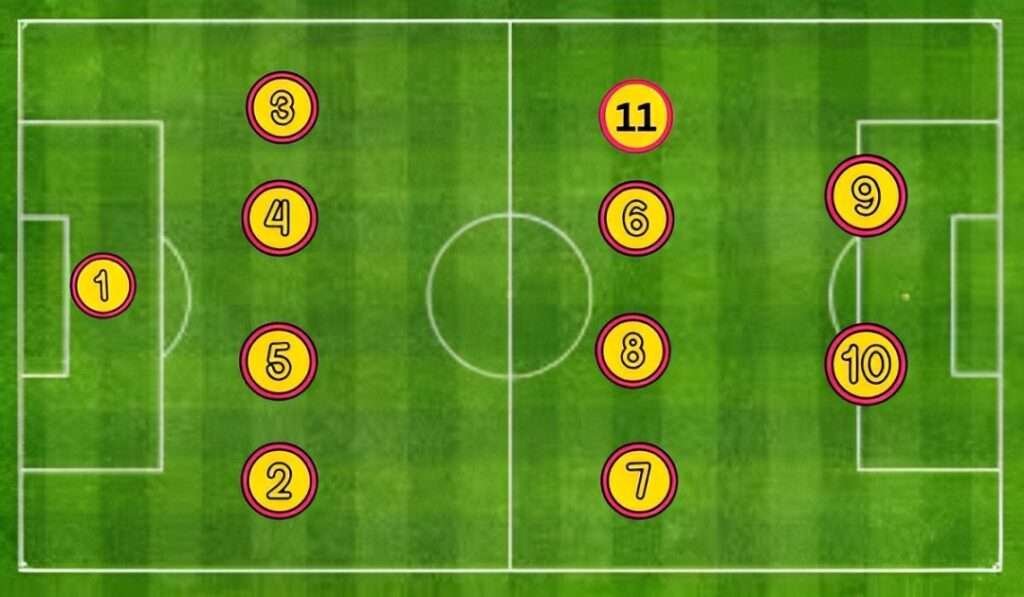How Many Players are on the soccer Field?
Each team has 11 players on the field during a professional soccer match. There are three categories of soccer players on the field: forwards, midfielders, and defenders. Each team, which must have at least 14 players and a maximum of 23, also has substitutes and reserves. By explaining How Many Players Are on the Soccer Field
Table of Contents
Positions And Their Roles:
The 11 players on the field can be generally categorized into four groups: forwards, defenders, midfielders, and goalkeepers.
The last trio—forwards, midfielders, and defenders—can be further divided into multiple positions.
While each side always has one goalkeeper, the number of defenders, midfielders, and forwards as well as their starting positions on the football pitch can vary depending on the strategies used by the team.
The functions of every football position are broken down here.

Goalkeeper:
In the end, a goalkeeper (GK) is the final line of defense for a team. A goalkeeper, who typically wears a jersey that is different in color from the rest of the team, typically protects the goal by staying in his team’s penalty area, which is typically behind the goalpost. The only football players who can catch or handle the ball with their hands are goalkeepers, but only when they are in their own penalty box.
While goalkeepers are free to leave their penalty boxes, they are always under the same rules as other outfield players, which include not using their hands.
Defenders:
The Defenders’ role is to defend the goal; they form the screen before the goalie.
Three backs: the left, right, and center. The first kind is positioned in the pitch’s middle defensive zone. The defensive lines’ left and right channels are covered by the full-back.
Midfielders:
The midfielders cover the middle section of the field. Their two main goals are to support the defense and help the strikers. These central midfielders may play an aggressive or defensive role depending on the situation.
Forwards:
The team’s most skilled players on the field are forwards or strikers, and their responsibility is to score goals. Therefore, all forwards are excellent finishers and frequently have excellent positional knowledge when finding openings in the opposition box. Depending on how they play, they can also be physically difficult, skilled, or both.
A center forward (CF) is a forward who plays more centrally, directly in front of the opposing goal. Center forwards are often physically strong and have good head and shooting skills. By avoiding pressure from opposing defenders, they are also adept at holding the ball up so that their teammates may rush up and assist in attack.
Players on The Bench:
There is a standard number, even though the number of players on the bench and substitutes varies. In the modern game, 5 replacements and 9 players on the bench are permitted. As a result, the number of 11 players on a soccer pitch is always the same. Nevertheless, during a game, the players themselves may be substituted.
See Also,
Interesting Facts About Football
Who is Better Messi or Ronaldo
How many players are there on a soccer field at a time?
In a standard soccer match, there are 22 players on the field, 11 players from each team, including the goalkeepers.
Can a team play with fewer than 11 players?
Yes, a team can play with fewer than 11 players, but it must have at least 7 players on the field to continue the match.
What happens if a team has less than 7 players?
If a team has fewer than 7 players on the field, the match will be stopped, and the team may forfeit the game depending on the referee’s decision and the competition rules.
Do the rules change for international soccer games?
No, international soccer games follow the same standard FIFA rules, which require 11 players per team on the field.

